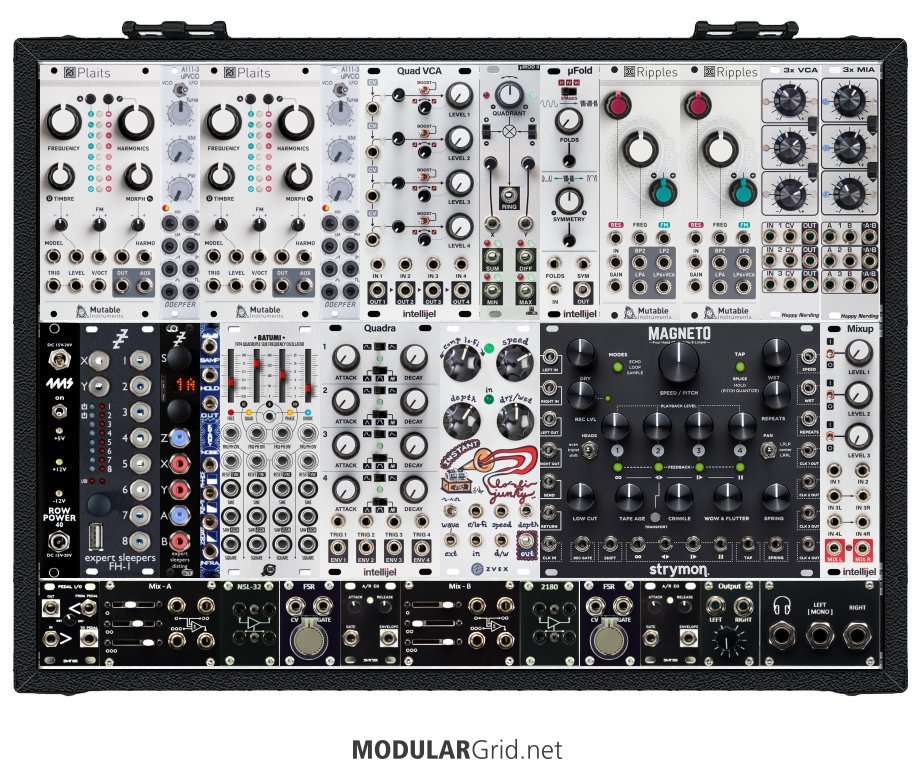Should still be possible to do a load-in in one shot...look into some cases/bags that'll allow all of the gear to be in one package. In theory, you're still in a size range that would still work as a carry-on, if we're talking a Digitakt, Model D, modular, and a mixer and laptop. The whole mess should more or less fit something in that size, depending on what you find and how creative you get with it. A good friend and colleague of mine gigs with about the same amount of gear (perhaps a little more, actually) and he's still able to fit the whole live rig into a carry-on.
Also, do pay attention to m1sterlurk's notes about the current draw above. That Model D alone draws a full amp on the +12 V rail...and the same span of panel (70 hp), with typical modules, really shouldn't draw much more than a couple hundred mA, at the very worst. Yet another reason for leaving the Model D in its own cab, I think. My rule of thumb says that as long as I can keep the current draw below 2/3rds of the maximum rating for the power supply, I'm pretty much assured that no operational state (such as power-ups, which can sometimes be more than the operating current load for tiny intervals) can jump beyond the supply's rated capacity.
Clocking...hm...there's several ways to do that. First method would be what you'd suspected: using the MIDI interface's clock out and clocking everything off of either a laptop or the Digitakt. Annoying that the Digitakt doesn't have a dedicated clock out, tho. Method #2 would be to clock everything from something a little...different. Have a look at Expert Sleepers' FH-1. Now, that would allow hosting of the Digitakt directly to/from the modular, and it can do the same thing for anything else that requires a MIDI host. It's much more complex than a regular MIDI interface as well, allowing a lot of user-definable functions to be implemented along with the MIDI conversion. DO, however, power the Digitakt via its own adapter; while the FH-1 can technically supply power via USB, you don't want to be right back in the same mess as having the Model-D in there with respect to current draw.
As for the tiles: good move. There's a lot of stuff in 1U out there from several makers that won't/can't fit in an Intellijel case, and sticking with the 'normal' tile format seems wiser. And yes, that includes a nice audio interface from Pulplogic, plus gobs of other toys.
Now for the modules themselves. I advise you to think small. ANYTHING that can be reduced in size should be if we're talking about a small travelling rig like this. Take stock of the functions you already have there (excepting the Model D, of course) and see just how small you can go with the same/similar/better functions. Take the Magneto, for example. Awesome delay. Frickin' huge, though...great for a large-scale rig, a real space-hog in this. But...consider what you'd get if you used a Chronoblob, and then used that delay's insert point to drop a few little 2hp processors into the delay feedback circuit. Quite entertaining...and smaller, too. Or the Quad VCA, which is good, but the 1U tile row lets you add a couple more VCAs, potentially for controlling mixer output dynamics, ergo no need for a second one (and VCAs for CVs can be very useful things! consider mixing a bunch of CVs, then controlling their summed level via a VCA at the Mix-A's output...nuts!).
Last thing: effects in a modular that can also be done by a stompbox should probably be done with a stompbox to save space. But this doesn't mean you have to be conventional about that, either. F'rinstance...the Zvex module could be replaced with two other I/O modules for send/return work to outboard FX boxes, one of which could be the selfsame box, or even a better/crazier lo-fi looper. And by replacing that with typical I/Os, which tend to be 4 hp, you get back 2 hp to use for something else (like half of yet another FX I/O, maybe?). And given that stompboxes are small things, they're easily jammed into the aforementioned gig bag with everything else.
Anyway, that should give you a bit to think about for a hot minute or two...


